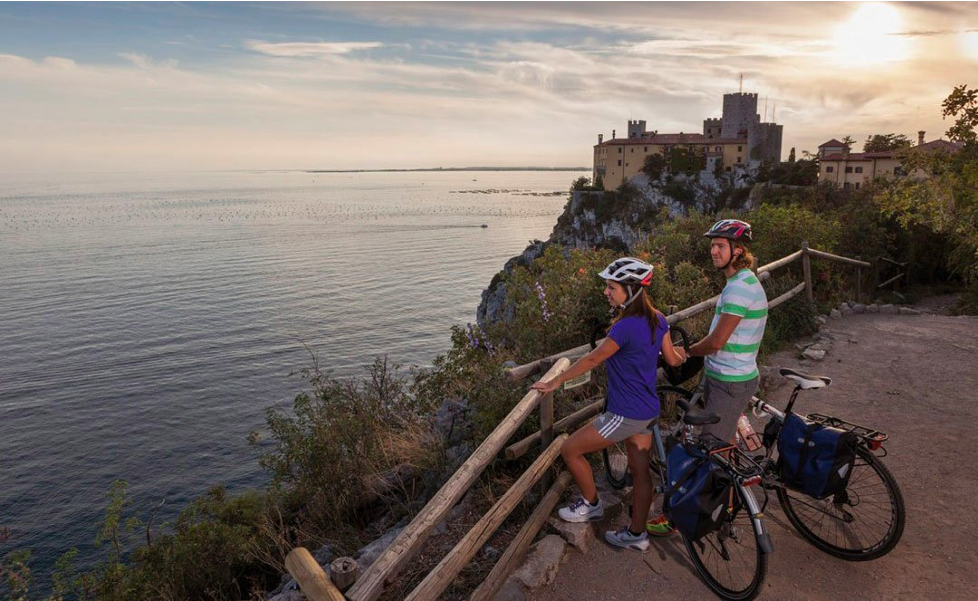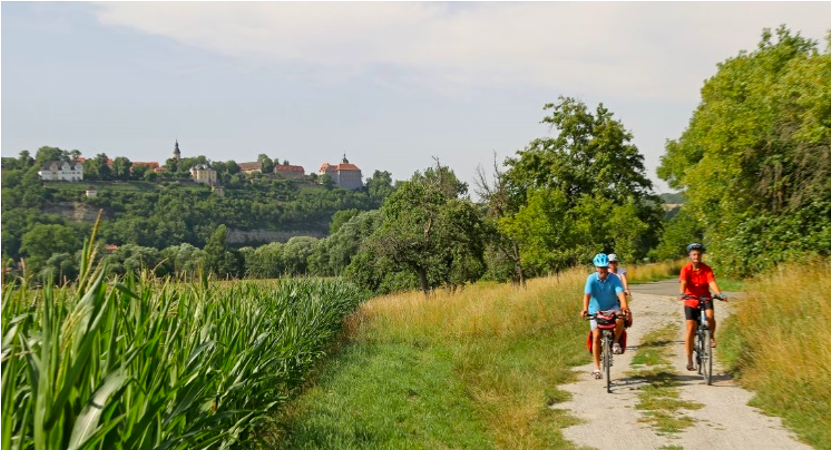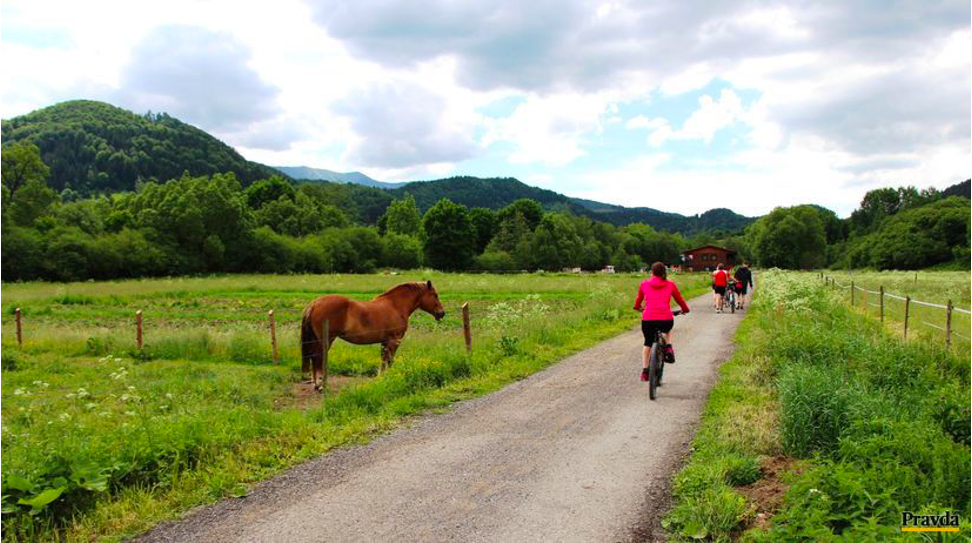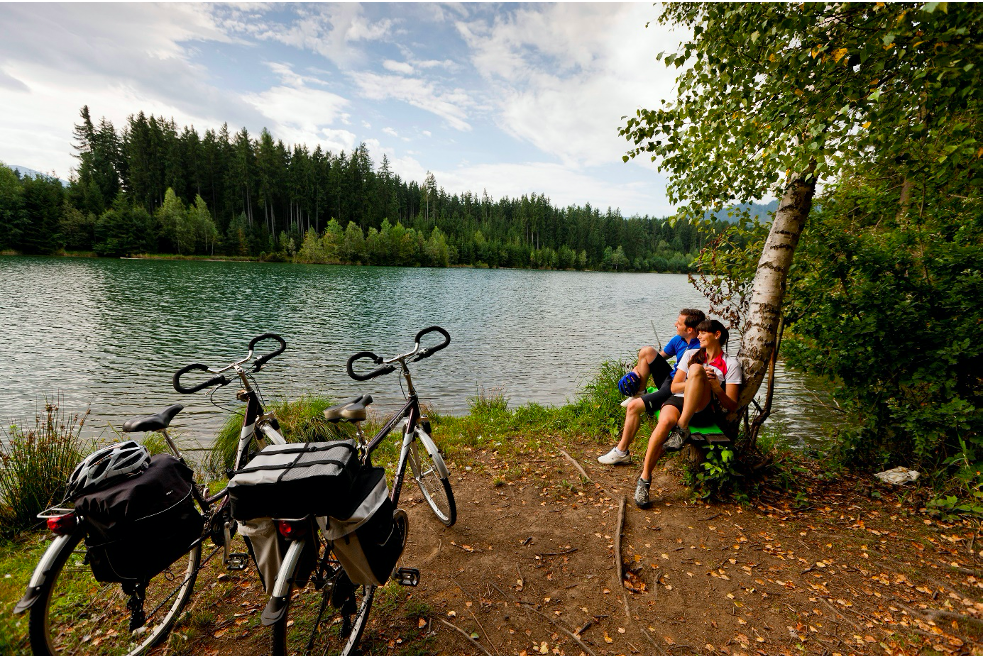Cycling across Europe – Five national cycle paths
EU ECO-TANDEM PROGRAMME | Jan. 14, 2021
ITALY - AdriaBike - The Upper Adriatic Cycle Route
The best way to help to reduce the greenhouse gases generated by traffic is by promoting cycling as a form of sustainable transport. And this is exactly what the Italian-Slovenian border regions and the Italian Northern Adriatic regions did, by creating the AdriaBike route.
What is AdriaBike? It is a cycle route that smells of mountain air, sea and salt, as it connects the Alpine town Kranjska Gora (SLO) with Ravenna (ITA) through the most beautiful places of the Italian Northern Adriatic and the Italian-Slovenian border.
The itinerary, at a slow pace, extends through the beauty of cities of art such as Koper, Trieste, Venice, Padua, Ravenna with the multiform expressions of nature of the Julian Alps, the Karst Plateau, the lagoons and the Po Delta Park. AdriaBike is not just any cycle path, the road, which stretches for about 1000 km, offers a fabulous experience that, pedal after pedal, opens up unprecedented sceneries of beaches, lagoons, unspoiled nature and unexplored flora and fauna.
The stunning cycling path which connects the Slovenian Alps and lakes with the beaches and lagoons of the Italian Adriatic can be experienced in 3 different separate routes:
- Kranjska Gora – Trieste. The emerald green road (360 km) - from the heart of the Julian Alps, along the Bovec and Tolmin valleys, through the Karst until Koper and then Trieste.
- Koper – Venice. The road of the Serenissima (358,2 km) - from Istria to the Venetian lagoon. A highly fascinating route amidst land, sea, beaches and lagoons
- Venice – Ravenna.
The road of the merchants and the burci (348 km)
Along the rivers and lagoons of the sailors’ trading routes to reach the ancient capitals of the Upper Adriatic.
One should take themselves on the AdriaBike journey in order to explore a road that, traveled by car, will not allow you to get to know extraordinary gulfs, islets and archaeological sites.
In order to learn more about the AdriaBike route please take a look at the following website.
GERMANY - Saale Radweg - Saale Cycle Path
Picture: ©Thüringer Tourismus GmbH/CMR Joachim Negwer
With around 200 long-distance cycle routes, Germany is a paradise for cyclists of all ages. One of them, the Saale Cycle Path, is appreciated as one of the most romantic natural routes in Germany. The path taking the river Saale’s name covers 403 kilometres, running through the federal states of Bavaria, Thuringia and Saxony-Anhalt, from the source of the Saale in the Fichtel Mountains above Jena and Naumburg to the Saale Estuary, where it joins the River Elbe by the town of Barby.
The path's quality has steadily improved during the years, which contributes to its increasing popularity. The route is divided into 9 stages and consists of mainly asphalted, waterproofed roads that are usually car-free. The path´s road conditions are quite varied, which makes it suitable for both families and sports lovers. The frequent dams and reservoirs of Europe's largest reservoir region and the mountainous landscape at the river´s upper reaches, with its many steep slopes, might be quite demanding and are therefore particularly suited for ambitious cyclists. From Saalfeld onwards the route becomes flatter and family-friendly, and remains almost always so until the river estuary.
What makes this path stand out is its landscape: valleys with little villages, castles, palaces and ancient ruins line the banks of the river. At approx. 107 km (stage 4) the colourful stalactite caves of Saalfeld Fairy Grottoes can be enjoyed. At half stage 5 (at approx. 186 km) the 1000-year-old Leuchtenberg Castle (”Queen of the Saale Valley.“) towers 400 metres high above the valley. Another must-visit approx. 76 km later, at stage 6, is the city of Naumburg, built around its UNESCO World Cultural heritage cathedral. Lush vineyards mark the landscape of the city´s valley in the famous wine growing region of Saale-Unstrut, a must for wine connoisseurs, who often have the opportunity to enjoy a quick rest stop and picnic on a bench, while tasting local wine. July is a good month for music lovers, who can enjoy the festival “TFF Rudolstadt”, welcoming artists from all over the world.
The route is easy to reach by train. Along the path there is a huge offer in accommodation options, many of which are specially prepared for the needs of long-distance cyclists. In many places, there are rental and charging stations for e-bikes and pedelecs (pedal electric cycles). If you feel like biking a little more, you can also combine the Saale cycle path with the same region's Unstrut cycle path (191 km).
To learn more about the Saale cycling path have a look
here.
SLOVAKIA – CykloKorytnička
Picture: CykloKorytnička, Autor: Renáta Jaloviarová, Pravda[1]
Slovakia offers several bike paths suitable for families with kids, recreational as well as more demanding cyclists. One of the cycling routes recommended for the families seeking a thrilling adventure with their little ones is CykloKorytnička. The trail copies the former narrow-gauge railway on the route Ružomberok - Korytnica Spa. From Ružomberok, the trail passes through parts of Biely Potok, Jazierce, Podsuchá, Liptovská Osada, Patočiny, and Korytnica. [2]
Amongst many marvellous natural sights that can be admired along this cycle path is Revúca Valley, formed by the Revúca River. This stop is considered to be recreational as well as educational, as a number of info panels teach us more about the significance and the history of the original railway.
Just a few kilometres further down the trail you can wander around the picturesque village Vlkolínec. Traditional wooden cabins have been turned to an architectural gem when painted cheerful colours, thanks to what, this village is now recognized as a UNESCO heritage site.
Moreover, the highest waterfall in the Low Tatras National Park-55 meters high Brankovský waterfall is just around the corner in Podsuchá. A stop, that is not to be missed by any nature lover.
A cherry on top of this already unforgettable trip is Korytnica with its a healing mineral spring with high iron content, where you can relax, refresh and plan your next visit.[3]
The route is 23 km long with an elevation gain of 300 m and leads across the border of two national parks - the Low Tatras and the Great Fatra.[4] From this route, you can continue to others across the whole of Slovakia and spend an amazing holiday!
If you do not dare to go on a cycling holiday on your own just yet, you can also check out professionally organized cycling holidays: here!
AUSTRIA – Murradweg - Styrias most impressive cycling route, from the source of river Mur to the Border of Slovenia
Picture: ©Steiermark Tourismus/ Tom Lamm
The Murradweg (Mur-Cycling-Route) is considered by connoisseurs to be the most varied river cycle path in the Alpine region in terms of scenery, and its course - slightly downhill and to many culinary destinations - makes it a true pleasure cycle path. It starts in the Hohe Tauern National Park and follows the River Mur via Austria's second biggest city, Graz, to the wine and thermal spa country in the border triangle of Austria, Slovenia and Hungary.
The cycle route is divided into 8 daily stages and covers 452.9 km. The exceptionally well described route has a real riding time of 36 hours. The main online information portal of the Mur-cycling route provides additional detailed information about arrival options, places to see, accommodation as well as events and festivals along the route.
You can easily access the Mur-Cycling-Route by train from all over Europe. If you come from far away, you can even arrive by plane, as Graz Airport is connected to the Mur-Cycling-Route.
The portal provides also travel packages for cycle tourist, which are always a combination of arrival and return tickets, detailed travel documents, overnight stays as well as tickets for museums and festivals.
Via the Austrian mobility app called "Bus-Bahn-Bim" (English: Bus-Train-Tram) you can plan your arrival and departure individually if you prefer that. Should bad weather interfere with your plans, you can use this APP to request information on all public transport services offered on all sections of the Mur-Cycling-Route. For such days we recommend that you take the train which usually offers a bicycle transportation service too. The time gained can be used in the many Styrian museums along the route.
If you prefer to cycle with light luggage, you can additionally book a luggage service that will transport your luggage to your respective next overnight accommodation.
Learn more about the Mur-Cycling-Route here.
GREECE - Dikorfo to Kipi village
Picture:Snapshot from the cycling route [Source: trekking.gr]
Due to its natural geography, Greece offers itself for a variety of cycling options, from relaxing seaside fronts to demanding mountainous areas. One particularly beautiful region perfect for mountain biking is the Zagorochoria (Zagori Villages) and the surrounding forests.
One of the potential cycling routes starts at the picturesque Dikorfo village. Dikorfo is only one of many similar villages in the area. It contains all the elements one can typically find in these villages: Traditional stone houses and mansions, cobblestone roads, lush and untamed vegetation, spring water fountains and even some lovely murals. The village church, a restoration of an older building, was built in 1778.
After leaving Dikorfo, cyclists then enter the beech forest, where they may enjoy the lovely view of Mount Tymphe along with the Vikos Gorge, one of the most impressive and celebrated gorges of Greece. It has a length of about 20 km, depth ranging from 120 to 490 m, and a width ranging from 400 m to only a few meters at its narrowest part. The road eventually leads to Kipi village, where one can visit and admire the characteristic arched, stone bridges, Plakida and Mylos, built around the 17th to 18th century.
The Zagorochoria area is a destination suitable for all seasons, supported by a network of hiking, cycling and trekking enthusiasts.
Eager to know more? Then follow us on all our social media channels!






